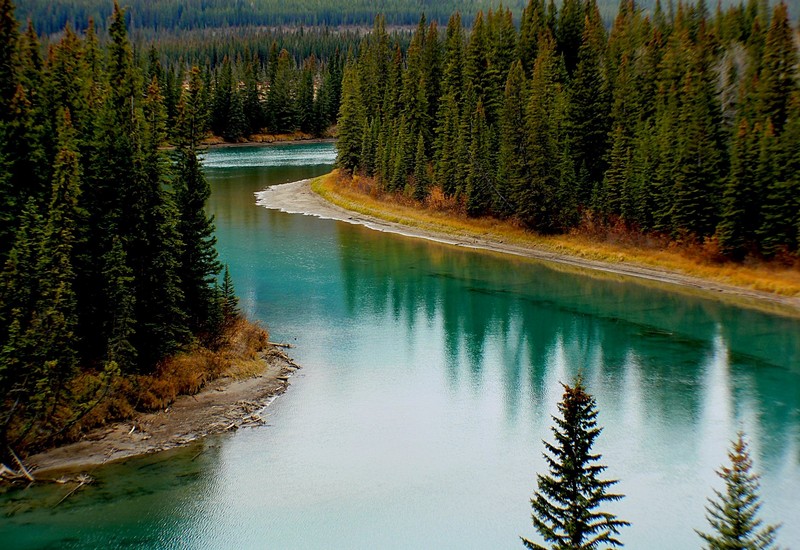South America is a vast continent brimming with natural wonders, cultural richness, and historical intrigue. From the soaring peaks of the Andes to the pulsating rhythms of its vibrant cities, this continent is a tapestry woven from the threads of diverse civilizations, breathtaking landscapes, and enigmatic legends. Here are some fun facts about South America that will indeed blow your mind.
1. The Amazon Rainforest: Earth’s Lungs
The Amazon rainforest is often referred to as the lungs of the planet, and for good reason. This verdant expanse is home to about 390 billion individual trees divided into more than 16,000 species. Spanning approximately 5.5 million square kilometers across several countries, it plays a pivotal role in absorbing carbon dioxide and producing oxygen. To imagine this ecosystem is to envision a colossal green cathedral, where every leaf contributes to the symphony of life.
2. River of Dreams: The Amazon River
Flowing majestically through the heart of the rainforest, the Amazon River stretches over 4,000 miles, making it one of the longest rivers in the world. However, its vastness is deceptive—its watershed is larger than that of the Nile, Mississippi, and Yangtze combined. The river is a lifeline teeming with over 2,200 species of fish, some of which can grow to monstrous sizes, while others sparkle with iridescent colors. To traverse its waters is to glide through a living entity, pulsating with life and mystery.
3. The Galápagos Islands: A Living Laboratory
The Galápagos Islands are an evolutionary wonder, famously associated with Charles Darwin’s theory of natural selection. Home to unique species like the giant tortoise and the marine iguana, these islands serve as a living laboratory for biologists and enthusiasts alike. The isolation of the islands has led to distinct adaptations among its inhabitants, showcasing the continent’s diverse ecosystems. Each island can be likened to a page in a storybook, unfolding new chapters of nature’s ingenuity.
4. The Highest Capital: La Paz, Bolivia
Perched at an astonishing altitude of over 3,600 meters, La Paz is the highest capital city in the world. The city appears to be a vibrant tapestry of colors, nestled within a stunning bowl-shaped valley surrounded by the fierce Andes mountains. The thin air here can be disorienting to some, creating an almost surreal experience for newcomers. Exploring La Paz is akin to walking through a gallery of culture, where every corner unveils intricate links to Bolivia’s indigenous heritage.
5. Mystical Machu Picchu: The Lost City of the Incas
Machu Picchu, an iconic representation of the Inca Empire, stands as a testament to the architectural and agricultural ingenuity of the ancient civilization. This UNESCO World Heritage site, often shrouded in mist, captures the imagination of travelers who scale the Inca Trail to reach it. With its terraced fields and stone structures, the city is an ethereal blend of human accomplishment and the majestic backdrop of the Andes. Standing amongst its ruins is like stepping into a forgotten chapter of history, resonating with echoes of a time long past.
6. The Rich Tapestry of Cultures
South America is a confluence of cultures, intertwining indigenous traditions with colonial legacies. The continent boasts over 400 indigenous groups and a multitude of languages, including Quechua and Guarani. Festivals across the region showcase this rich cultural mosaic, from the colorful Carnaval in Brazil to the mesmerizing Inti Raymi in Peru. Cultural experiences here are like receiving a warm embrace, inviting visitors to participate in vibrant rituals that have thrived for centuries.
7. A Land of Extremes: Salar de Uyuni
The Salar de Uyuni in Bolivia is the world’s largest salt flat, stretching across more than 10,000 square kilometers. During the rainy season, the flat transforms into a mirror-like surface that reflects the sky, creating a breathtaking illusion that feels otherworldly. Standing in the midst of this expansive white salt desert, one can almost reach for the clouds, as if suspended between heaven and earth. The sheer starkness of its beauty can be overwhelming, leaving visitors in awe of nature’s artistry.
8. Ancient Civilizations: The Nazca Lines
The Nazca Lines, etched into the arid plains of Southern Peru, represent an enduring mystery. These geoglyphs, depicting various shapes and creatures, can only be fully appreciated from the air. The origins of these massive designs remain speculative, yet they provoke intrigue regarding the spiritual or astronomical significance to the Nazca culture. Observing these lines from above is akin to reading an ancient script, hinting at the expressions of a civilization that thrived long before our own.
9. Patagonia: Nature’s Untamed Frontier
The southern region of Patagonia, shared by Argentina and Chile, is a sanctuary for adventurers and nature enthusiasts. With its rugged mountains, massive glaciers, and stark fjords, Patagonia offers a glimpse of wilderness that seems frozen in time. Each trek through its vast landscapes feels like traversing uncharted territory, where nature reigns supreme, and beauty is both raw and exhilarating. The dramatic scenery can evoke a sense of insignificance, underscoring humanity’s small place in the grand tapestry of nature.
10. Coffee Cultivation: A Brewed Journey
South America is one of the largest coffee-producing regions in the world, with countries like Colombia and Brazil leading the charge. The diverse climates and altitudes create perfect conditions for growing a myriad of coffee beans, each with its unique flavor profile. The journey from seed to cup is a labor of love, enriching the culture with deep-rooted traditions and vibrant local communities. Enjoying a cup of South American coffee is not just a drink—it’s an experience steeped in history and rich with narrative.
In conclusion, South America is a continent that blends the old with the new, nature with culture, and the known with the mysterious. Each facet of this land offers stories waiting to be unraveled, and facts that elevate its allure, inviting explorers to venture into its depths and discover the wonders that lie within.









